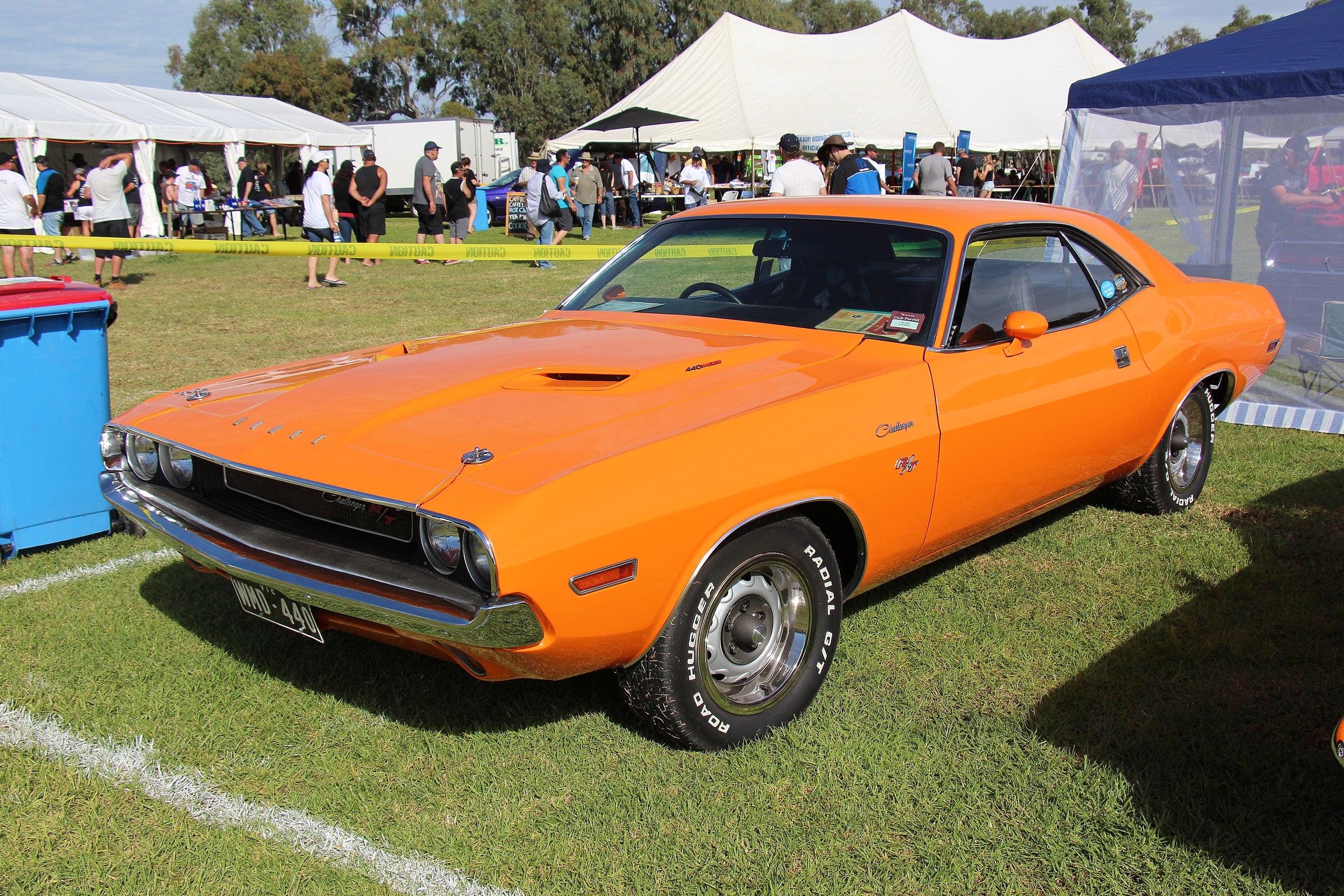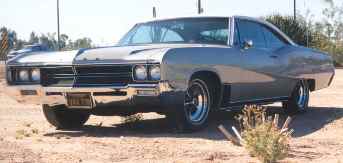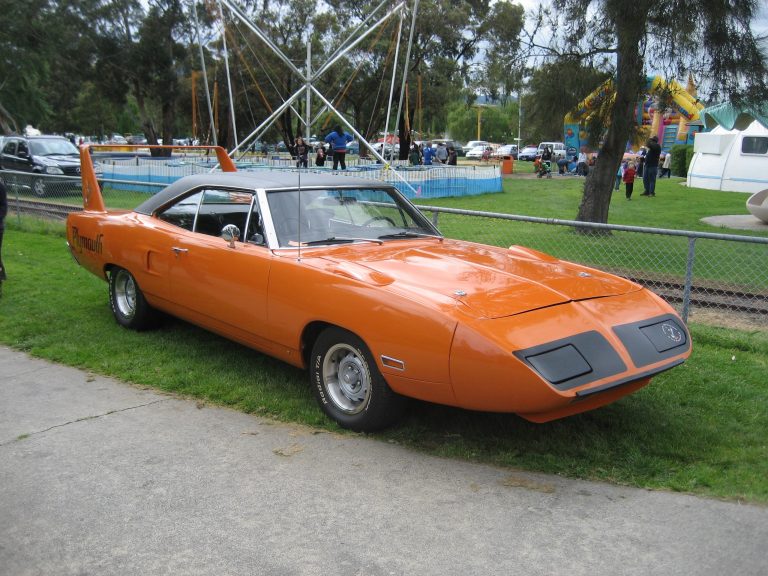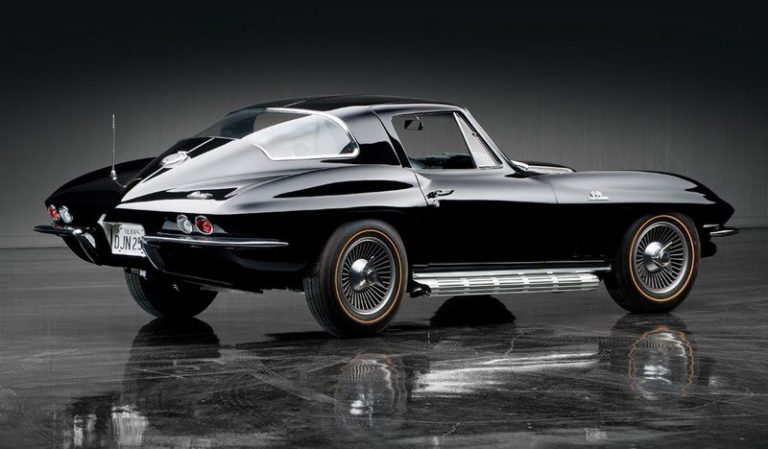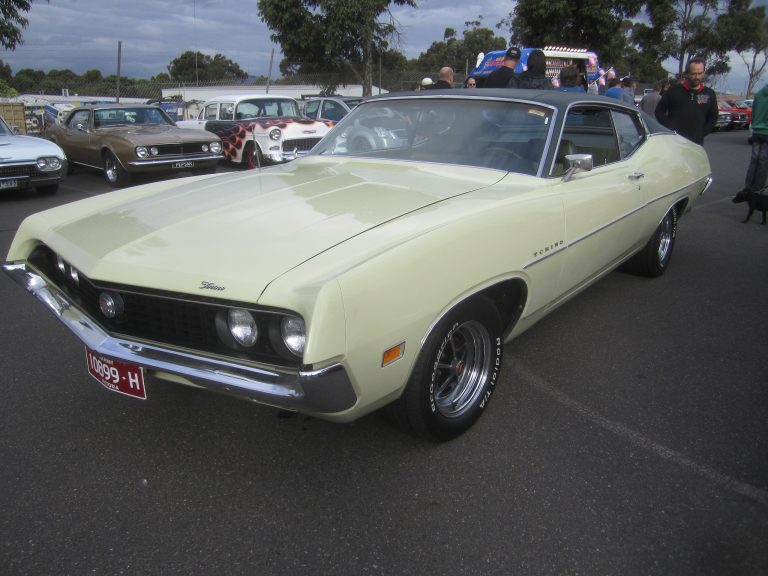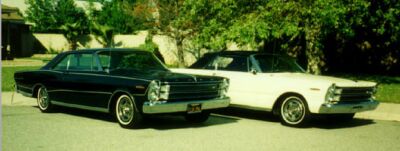Dodge Challenger

Meet Chandler
Chandler has a bachelors and masters degree in history as well as a passion for classics and muscle cars. His education and historical knowledge makes him skilled at crafting highly detailed articles about America’s muscle cars and automotive history. His love of muscle cars is undeniable, with him seeking them out at every opportunity during his visits to auto shows and car meets. Chandler’s knowledge and enthusiasm towards automotive history make him a great asset to the Muscle Car Club community.
From pony car, to compact, to modern muscle champion, the Dodge Challenger is one of the most iconic vehicles in American history. Dodge first produced the Challenger from 1970–1974, and it made huge waves alongside its cousin the Dodge Charger. Today, the Challenger R/T and T/A with the 340, 383, 426 HEMI, and 440 Magnum V8 engines, are some of the most collectible cars on the market. After a two-decade hiatus, Dodge returned the Challenger for buyers for the 2008 model year, where it remained through 2023. Read on to find out everything you need to know about one of the most legendary pony and muscle cars of all time.
Dodge Challenger Overview
Dodge has produced the Challenger for three different generations, starting with the first generation from 1970–1974. The first Challengers made it out for the 1970 model year, and they immediately established the car as a formidable beast on the street. Dodge based the Challenger on the Plymouth Barracuda, and it rode on the Chrysler E-body platform. It was basically a smaller version of the B-body Charger, and Dodge gave it all the same engines, including the ultimate 426 HEMI and 440 big-block V8s.
In addition to the base Challenger, there were also the high performance R/T, T/A, and Rallye versions that appeared variously over the first generation. The Challenger never sold particularly well outside of its first year, leading Dodge to drop it after 1974.
The Challenger returned from 1978–1983 as a captive import of the Mitsubishi Galant, where it again featured a HEMI. Unfortunately, these HEMIs were a 1.6 or 2.6 liter inline-4 that made 77–105 horsepower. Dodge marketed the car under the Colt Challenger label, and it sold absolutely terribly.
For 24 years the Challenger name was dormant, until Dodge finally brought it back for the 2008 model year. Since then, Dodge has completely revamped the Challenger name and legend, making it into one of the finest modern muscle cars of the era. Since the third generation launched, Dodge has been absolutely insane with performance. Inside models variously named Hellcat, Demon, Redeye, and Super Stock, the most powerful third gen Challengers boast 700-800 horsepower completely stock.
Dodge announced they were retiring the gas-powered Challenger after 2023, leaving open the possibility for an EV Challenger in the future. Still, Dodge sent out the Challenger the right way, with the 2023 SRT Demon 170, featuring a 1,025 horsepower from a supercharged 6.1 liter V8.
First Generation 1970–1974 Dodge Challenger
The first ever Dodge Challengers rolled off the assembly line in late-1969 for the upcoming 1970 model year. Dodge modeled the brand new Challenger on its Chrysler cousin the Plymouth Barracuda, which had been around since 1964. Both the Barracuda and the Challenger resided on Chrysler’s new E-body platform, which had a 110 inch wheelbase (on the Challenger) and was 191 inches in length.
The Challenger was smaller and shorter than the B-body Charger, but still got the same massive engines under the hood. While Chrysler envisioned the Barracuda competing with GM’s Chevrolet Camaro and Pontiac Firebird as well as the Ford Mustang, they positioned the Challenger to compete with the Mercury Cougar and Chevrolet Chevelle in the more luxury pony car department.
The Challenger had a stretched hood, coke bottle-esque profile with tapered rear fenders, and an upgraded luxury interior. Buyers had the option of either a two-door hardtop or two-door convertible as body styles, and they could get the Challenger in base, Road/Track (R/T), Special Edition (SE), and Trans Am (T/A) trim levels. The R/T lasted through 1971, when it was dropped, and a Rallye version arrived from 1972–1974.
From 1970–1971, the Challenger had a formidable range of engines, from a 225 inline-6 at 145 horsepower all the way to the Six-pack 440 Magnum and 426 HEMI, the latter of which produced 425 horsepower and almost 500 lb-ft of torque. Unfortunately, when the big-blocks dropped from the lineup so did the R/T package, and the Challenger limped along to an inglorious finish in 1974.
1970 Dodge Challenger Info
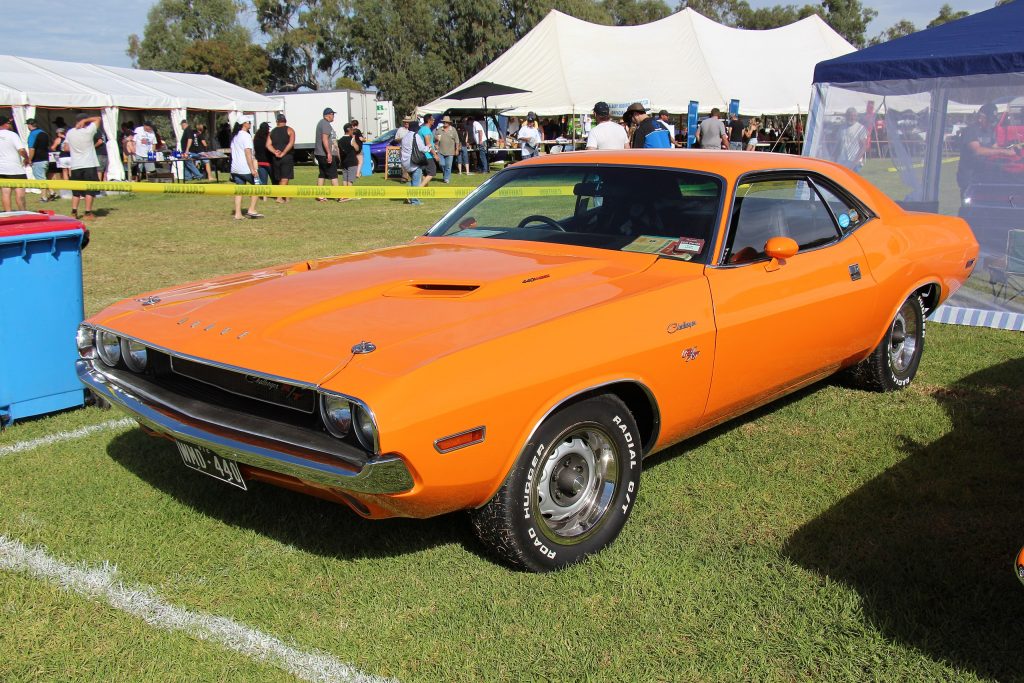
The 1970 Dodge Challenger was the first to ever hit the market. The top engine choices were the 318 and 340 LA-series V8s, the B-series 383 V8, RB-series 440 Magnum V8s, and the 426 HEMI V8. For 1970, the 318 used a Carter double-barrel, had 9.0:1 compression, and made 230 horsepower. The next step up was the 340 V8 which made 275 horsepower through a Carter “Thermo-Quad” four-barrel and 10.0:1 compression.
In addition, there was also a “six-pack” version of the 340 V8 which Dodge used in the Challenger T/A. The “six-pack” was three Holley double-barrel carbs put together for a huge 6-venturi unit. It increased output up to 290 horsepower, and was the street version of the 340 Dodge used in the Sports Car Club of America’s Trans American Sedan Championship, just like the Plymouth ‘Cuda AAR. The T/As had fiberglass hoods, big hood scoops, dual low-restriction exhausts, and a floor-mounted Hurst four-speed.
The big-block offerings in the Challenger started with the B-series 383 V8. The Challenger got three outputs from the 383, a low-compression (9.2:1) two-barrel version and two high-compression (10.0:1) four-barrel versions. Power-wise, the next up was the 440 Magnum V8. The Magnum made either 375 horsepower with a Carter AFS four-barrel or 390 horsepower with the Holley six-pack.
However, the top of the line was still the 426 HEMI. The “Street-Hemi” made a whopping 425 horsepower and 490 lb-ft of torque through dual Carter AFB quad-barrel carbs and a 10.25:1 compression ratio.
1970 Body Styles
For the 1970 Challenger, buyers had the option of either a two-door hardtop or two-door convertible as body styles. They could get the Challenger in base, Road/Track (R/T), Special Edition (SE), and TransAm (T/A) trim levels.
For the base Challenger, Dodge only made engines available up to the 383. The high-performance Challenger R/T got the 383, 426, or 440 (and six-pack) V8s, and they could be had with either a 4-speed manual or 3-speed TorqueFlite automatic. The Challenger T/A only came with the 340 six-pack and a 4-speed manual.
1970 Dodge Challenger Engines
| Model Year | Engine | Horsepower | Torque |
| 1970 | 225 I6 (1bbl) | 145 horsepower | 215 lb-ft |
| 318 V8 (2bbl) | 230 horsepower | 320 lb-ft | |
| 340 V8 (4bbl) | 275 horsepower | 340 lb-ft | |
| 340 V8 (3x2bbl) (T/A) | 290 horsepower | 345 lb-ft | |
| 383 V8 (2bbl) | 290 horsepower | 390 lb-ft | |
| 383 V8 (4bbl) | 330 horsepower | 425 lb-ft | |
| 383 V8 (4bbl) | 335 horsepower | 425 lb-ft | |
| 426 V8 (2x4bbl) (HEMI) | 425 horsepower | 490 lb-ft | |
| 440 V8 (4bbl) | 375 horsepower | 482 lb-ft | |
| 440 V8 (3x2bbl) | 390 horsepower | 490 lb-ft |
1970 Dodge Challenger Production Numbers
| Model Year | Bodystyle | Production Total |
| 1970 | Two-Door Hardtop | 53,337 |
| Two-Door SE | 6,584 | |
| Two-Door Convertible | 3,173 | |
| R/T Twp-Door HT | 14,889 | |
| R/T SE HT | 3,979 | |
| R/T Convertible | 1,070 | |
| 1970 Total | 83,032 |
1971 Dodge Challenger Performance and Changes
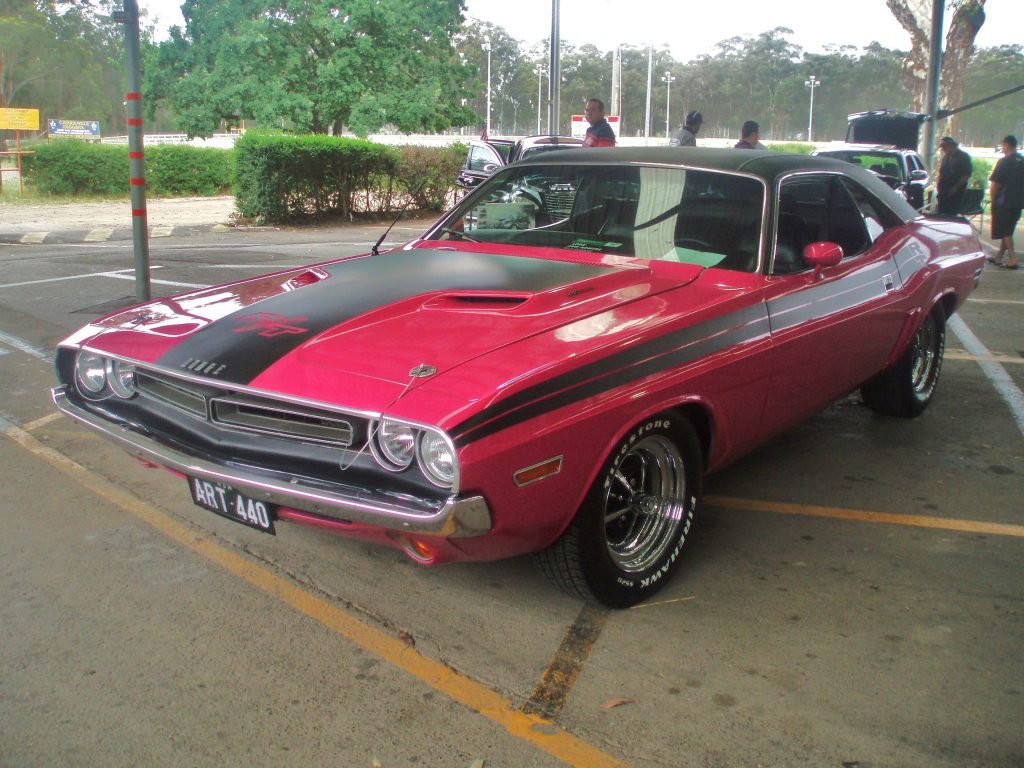
The 1971 Challenger looked pretty much the same as the year prior, with only modest updates made to the grille and taillights. The Challenger T/A was no longer available though it had been planned, and the R/T continued as the only high performance offering. The R/T once again had the Rallye instrument cluster, heavy-duty drum brakes, variable speed wipers, but was no longer available as a convertible. Engines choices remained the same, though the four-barrel 440 Magnum was no longer available, and the six-pack 440 dropped to 385 horsepower
1971 Dodge Challenger Engines
| Model Year | Engine | Horsepower | Torque |
| 198 I6 (1bbl) | 125 horsepower | 180 lb-ft | |
| 225 I6 (1bbl) | 145 horsepower | 215 lb-ft | |
| 318 V8 (2bbl) | 230 horsepower | 320 lb-ft | |
| 340 V8 (4bbl) | 275 horsepower | 340 lb-ft | |
| 383 V8 (2bbl) | 275 horsepower | 374 lb-ft | |
| 383 V8 (4bbl) | 300 horsepower | 409 lb-ft | |
| 426 V8 (2x4bbl) (HEMI) | 425 horsepower | 490 lb-ft | |
| 440 V8 (3x2bbl) | 385 horsepower | 490 lb-ft |
1971 Dodge Challenger Production Numbers
| Model Year | Bodystyle | Production Total |
| 1971 | Two-Door Coupe/HT | 23,088 |
| Two-Door Convertible | 2,165 | |
| R/T Two-Door HT | 4,630 | |
| 1971 Total | 29,883 |
1972 Dodge Challenger Performance and Changes
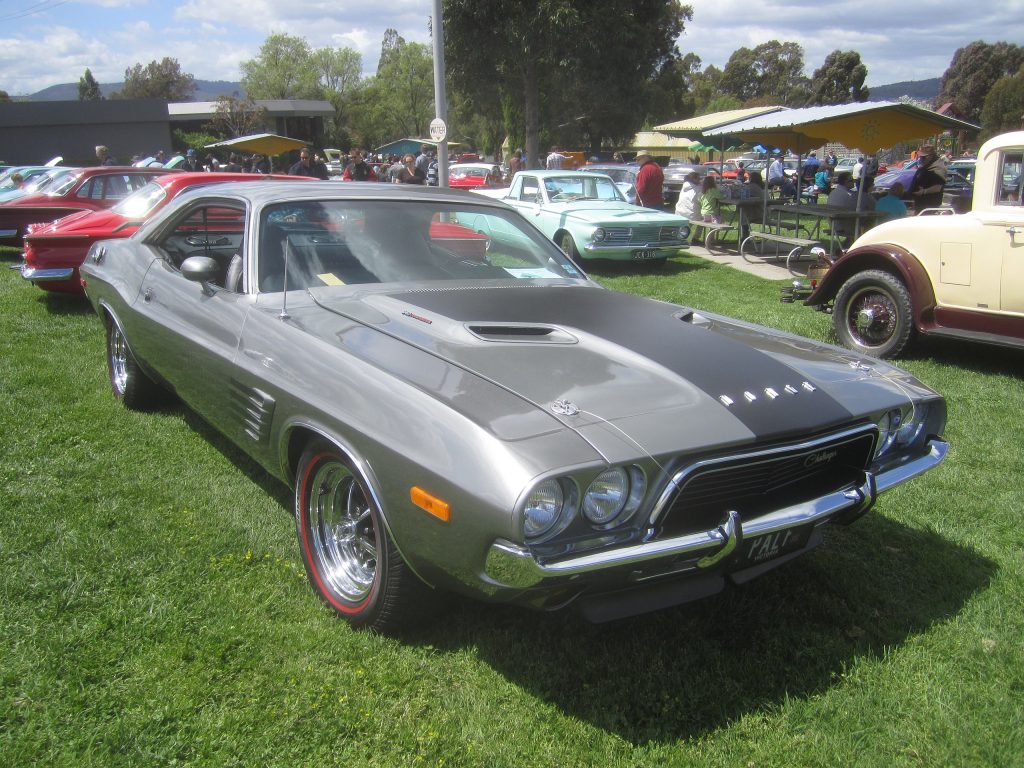
Big changes came to the Dodge Challenger in 1972, and they weren’t necessarily for the better. Dodge dropped the R/T and replaced it with the Rallye, but it was much less formidable. Due to emissions cuts, all of the big-block engines disappeared from the Challenger lineup. This left the 340 making 240 horsepower (SAE Net) as the most powerful option. Also gone was the convertible, and a two-door hardtop coupe was the only option.
1972 Dodge Challenger Engines
| Model Year | Engine | Horsepower | Torque |
| 1972 | 225 I6 (1bbl) | 110 horsepower | 185 lb-ft |
| 318 V8 (2bbl) | 150 horsepower | 260 lb-ft | |
| 340 V8 (4bbl) | 240 horsepower | 290 lb-ft |
1972 Dodge Challenger Production Numbers
| Model Year | Bodystyle | Production Total |
| 1972 | Two-Door Hardtop | 18,535 |
| Two-Door Rallye HT | 8,123 | |
| 1972 Total | 26,658 |
1973 Dodge Challenger Performance and Changes
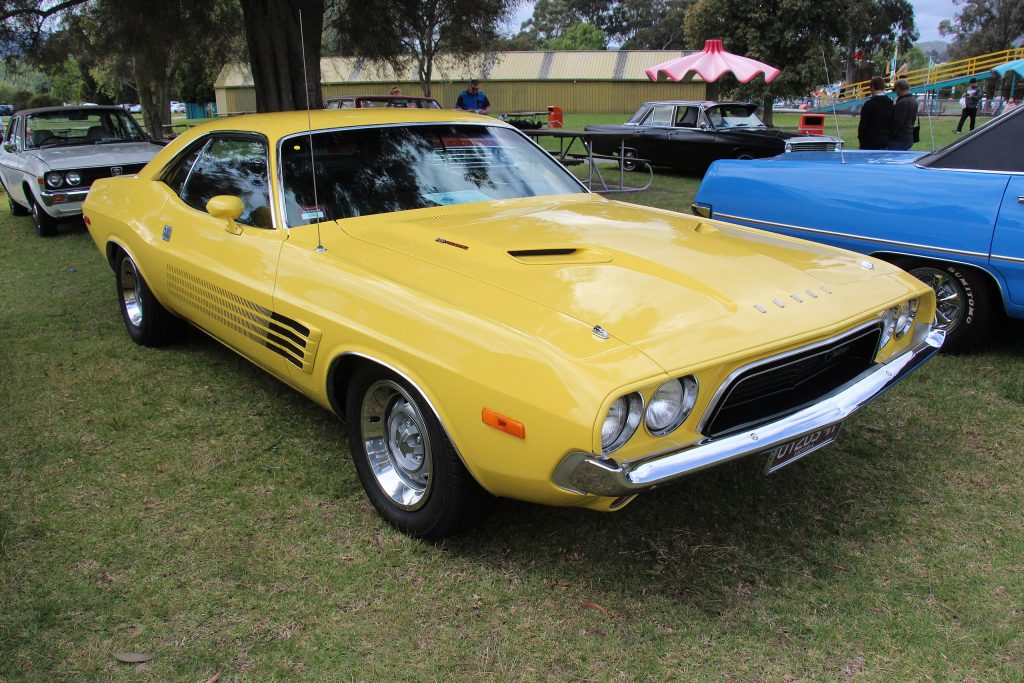
The 1973 Dodge Challenger barely changed from the year prior, and the only differences were new rubber bumper guards and a new grille. The six-cylinder was dropped, and the 340 mill at 240 horsepower was still the highest performance option.
1973 Dodge Challenger Engines
| Model Year | Engine | Horsepower | Torque |
| 1973 | 318 V8 (2bbl) | 150 horsepower | 265 lb-ft |
| 340 V8 (4bbl) | 240 horsepower | 290 lb-ft |
1973 Dodge Challenger Production Numbers
| Model Year | Bodystyle | Production Total |
| 1973 | Two-Door Coupe | 32,596 |
1974 Dodge Challenger Performance and Changes
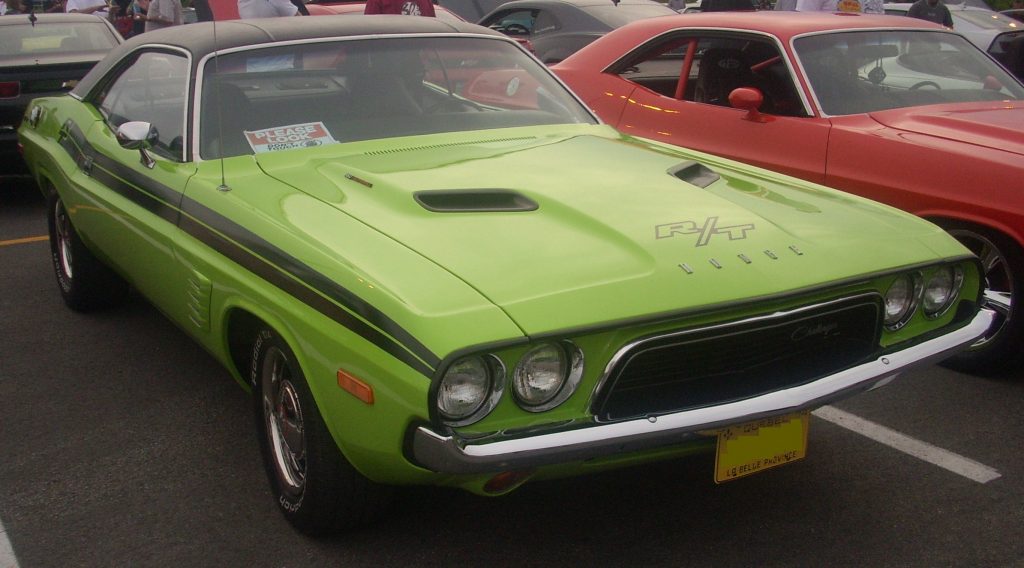
Once again, the 1974 Challenger was basically the same visually as the year prior. The only difference was the change from the 340 to the 360 V8, which was from the same Chrysler LA-series of engines. The 360 produced 245 horsepower with a four-barrel carb and a 8.4:1 compression ratio. Dodge dropped the Challenger model after the 1974 year, and it did not return until 1978.
1974 Dodge Challenger Engines
| Model Year | Engine | Horsepower | Torque |
| 1974 | 318 V8 (2bbl) | 150 horsepower | 255 lb-ft |
| 360 V8 (4bbl) | 245 horsepower | 320 lb-ft |
1974 Dodge Challenger Production Numbers
| Model Year | Bodystyle | Production Total |
| 1974 | Two-Door HT Coupe | 16,437 |
Second Generation 1978–1983 Dodge Challenger
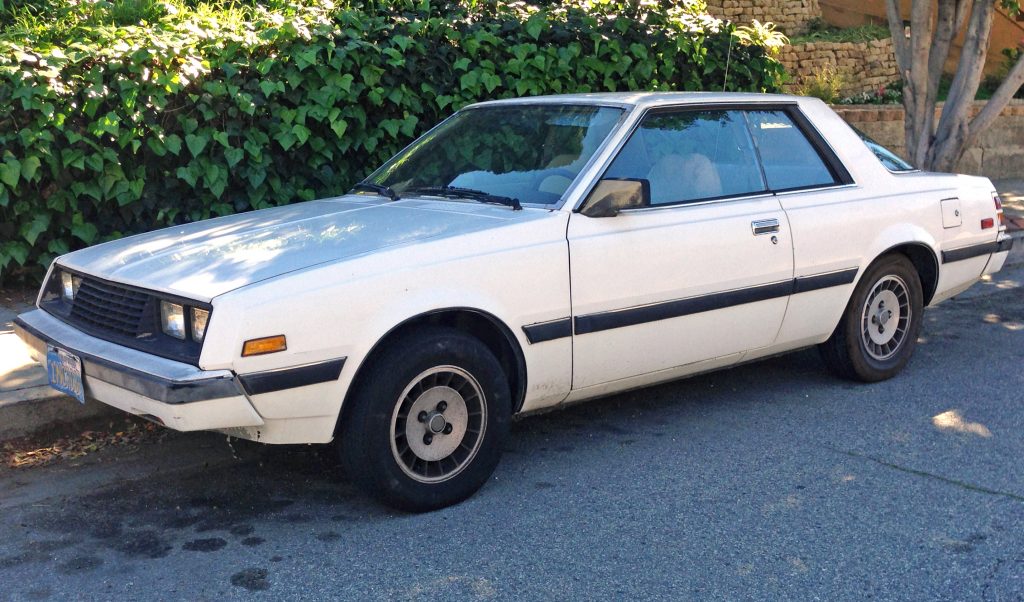
After three years off, Dodge brought back the Challenger in 1978. Brochures hyperbolically hailed the reintroduction of the Challenger as “an exciting international event,” billing it as a GT machine that was “equally at home on winding mountain roads, crowded city streets, and wide-open stretches of highway … sophisticated in design … [and] Spirited enough for adventurous driving … a true sports car.”
Unfortunately the reality of the new Challenger was much, much different. There were only two engines available, 1.6 and 2.6 liter inline-fours, producing just 77–105 horsepower. Both of them used counterbalancing shafts for the first time in the U.S., which they marketed as “silent shafts.”
In addition, both engines used Mitsubishi’s lean-burn MCA-Jet injection system. The MCA system used a two-barrel carburetor, but there was a third valve installed on the cylinder head for a fuel injector. This injected an extra-lean mixture of fuel, which helped to reduce emissions and increase fuel economy. However, it did nothing for performance, and the top dog 2.6 liter made just 105 horsepower. Available was a five-speed manual as standard, and TorqueFlite automatics were available everywhere “except high altitude areas.”
The new Challenger was a two-door coupe that was a captive important of the Mitsubishi Gallant. Plymouth released their own version, the Sapporo, and believe us when we tell you nobody noticed the Challenger had come back. Sales were about half of what they were the first generation, even with the fuel-economy-conscious American buyer coming into vogue. In 1984, Chrysler dropped the Colt Challenger in favor of the Chrysler Conquest/Mitsubishi Starion.
1978–1983 Dodge Challenger Engines
| Model Years | Engine | Horsepower | Torque |
| 1978-1979 | 1.6 I4 (2bbl/MCA) | 77 horsepower | 87 lb-ft |
| 1978-1981 | 2.6 I4 (2bbl/MCA) | 105 horsepower | 139 lb-ft |
| 1982-1983 | 2.6 I4 (2bbl/MCA) | 100 horsepower | 137 lb-ft |
1978–1983 Dodge Challenger Production Numbers
| Model Year | Bodystyle | Production Total |
| 1978 | Two-Door Coupe | 14,196 |
| 1979 | Two-Door Coupe | 16,920 |
| 1980 | Two-Door Coupe | 13,059 |
| 1981 | Two-Door Coupe | 12,371 |
| 1982 | Two-Door Coupe | 14,340 |
| 1983 | Two-Door Coupe | 34,701 |
| 1984 (1983 Model Year) | Two-Door Coupe | 1,424 |
| 1978-1984 Total | 107,011 |
Third Generation 2008+ Dodge Challenger
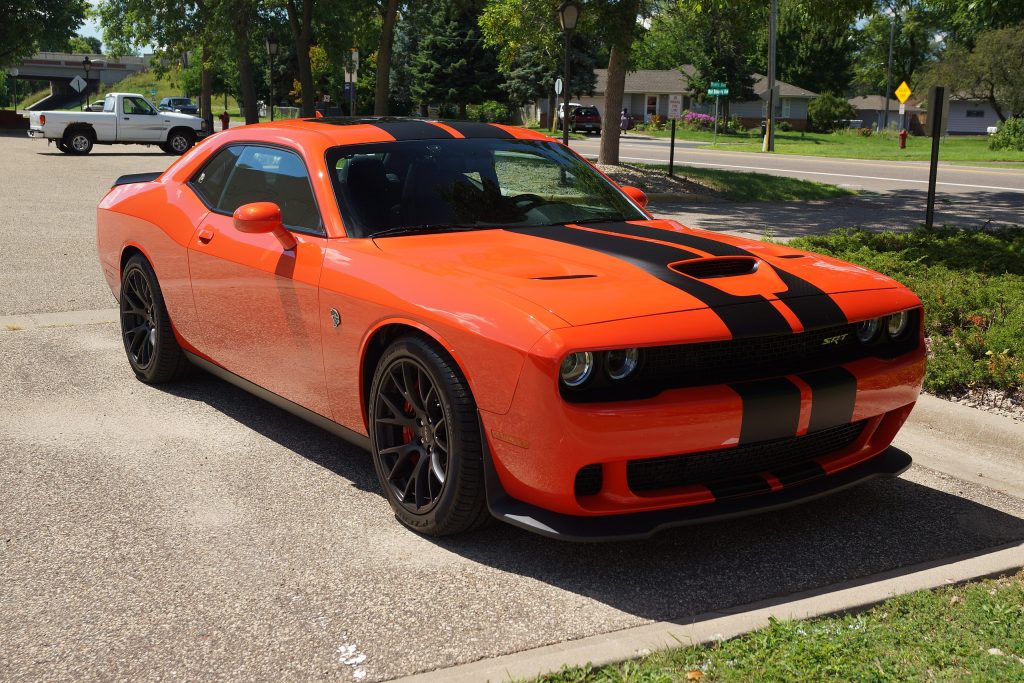
After 25 years, Dodge brought back the Challenger namesake in 2008 after unveiling its concept three years earlier at the North American International Auto Show in Detroit in January 2006. The first new Challengers were available in 2008, and they rode on the brand new Chrysler LC chassis platform, which was once again a shortened version of the Charger’s LX chassis.
For the initial 2008 model year, Dodge only made the SRT8 version of the Challenger available. Starting in 2009, Dodge also added the SE and R/T versions to round out the lineup. The SE only lasted through 2011, and Dodge replaced it with the SXT from 2012–2023. Powering the SE from 2009–2010 was a 3.5 liter V6 making 250 horsepower. Since 2011, Dodge has put the 3.6 Pentastar V6 inside the SE/SXT Challenger, producing 304 horsepower.
The R/T lasted through 2023 as well, and starting in 2015 got the Scat Pack option. Powering the R/T has always been the 5.7 HEMI V8, producing 371–375 horsepower and 400–410 lb-ft of torque. The Scat Pack got the more powerful 6.4 HEMI V8, producing 485 horsepower and 475 lb-ft of torque.
Starting in 2017, Dodge also made the Challenger GT available, which was the first Challenger ever to get all-wheel drive as an option. The Challenger GT got the same 305 horsepower 3.6 Pentastar V6 as the SXT.
In 2015, Dodge gave the entire Challenger lineup a facelift, and moved it to the new LA chassis platform. This was pretty similar to the outgoing LC chassis, and was once again a smaller version of the Charger LD chassis.
The T/A and T/A 392
From 2017–2023, Dodge made the Challenger T/A and Challenger T/A 392 available as a model between the R/T and SRT trims. The T/As got upgraded suspension, a cold air intake through the headlights, bigger brakes, and a black hood with a scoop. Available engines were either the 5.7 HEMI or 6.4/392 HEMIs from the R/T and R/T Scat Pack.
The SRT8 and SRT 392
Stepping up from the R/T and R/T Scat Pack are the SRT (Speed and Racing Technology) variants. From 2008–2010, the most powerful Challenger was the SRT8 which used a 6.1 liter HEMI V8 producing 425 horsepower and 420 lb-ft of torque.
In 2011, Dodge upgraded the engine to the 6.4 liter/392 cid HEMI V8, which produced 471 horsepower and 470 lb-ft of torque. They called the new model the SRT8 392. In 2015, power increased to 485 horsepower and 475 lb-ft of torque, same as the R/T Scat Pack, and it lasted through 2018.
SRT Hellcats, Demons, Redeyes, Jailbreaks, and Super Stocks
In 2015, Dodge brought out probably the most iconic modern version of the Challenger, the Challenger SRT Hellcat. The Hellcat used a 6.2 liter HEMI V8 equipped with a 2.3 liter twin-screw supercharger and produced 707 horsepower and 650 lb-ft of torque. In 2018, Dodge made a widebody Hellcat available for the first time.
For 2018 only, Dodge made the Challenger SRT Demon available, which used a modified version of the Hellcat V8. Equipped with a 2.7 liter twin-screw supercharger, the Demon pumped out an impressive 839 horsepower and 770 lb-ft of torque.
Dodge upgraded the Hellcat to 717 horsepower in 2019, and they also made the SRT Hellcat Redeye available. This version produced 797 horsepower through several modifications, including a larger supercharger running more boost. From 2022–2023, the Redeye got its own modified version, the SRT Hellcat Redeye Jailbreak This produced an additional 10 horsepower to make 807 horsepower total.
From 2020–2023, Dodge also produced the Challenger SRT Super Stock, which used the same modified engine as the Jailbreak.
The SRT Demon 170
The final variant Dodge made of the Challenger was the SRT Demon 170, which lasted for 2023 only as a send off. This used another modified version of the Hellcat V8, producing a maximum of 900 horsepower and 810 lb-ft of torque on 91 octane pump gas. However, if you put E85 inside, that jumps to 1,025 horsepower and 945-lb-ft of torque, for a jaw-dropping ride. Good for a ¼ mile of 8.61 seconds @ 151 mph (according to Dodge), it was by far the most powerful production Challenger ever created.
Dodge announced they were retiring the gas-powered Challenger after 2023, leaving open the possibility for an EV Challenger in the future. We can only hope anything new won’t ruin the iconic Challenger namesake.
2008+ Dodge Challenger Engines
| Model Years | Engine | Horsepower | Torque | Trim Level |
| 2009-2010 | 3.5 liter V6 | 250 horsepower | 250 lb-ft | SE |
| 2011 | 3.6 liter V6 | 304 horsepower | 268 lb-ft | SE |
| 2012-2023 | 3.6 liter V6 | 304 horsepower | 268 lb-ft | SXT |
| 2017-2023 | 3.6 liter V6 | 304 horsepower | 268 lb-ft | GT |
| 2009-2023 | 5.7 liter V8 (AT) | 371 horsepower | 401 lb-ft | R/T |
| 2009-2023 | 5.7 liter V8 (MT) | 375 horsepower | 410 lb-ft | R/T |
| 2015-2023 | 6.4 liter V8 | 485 horsepower | 475 lb-ft | R/T Scat Pack |
| 2017-2023 | 5.7 liter V8 (AT) | 371 horsepower | 401 lb-ft | T/A |
| 2017-2023 | 5.7 liter V8 (MT) | 375 horsepower | 410 lb-ft | T/A |
| 2017-2023 | 6.4 liter V8 | 485 horsepower | 475 lb-ft | T/A 392 |
| 2008-2010 | 6.1 liter V8 | 425 horsepower | 420 lb-ft | SRT8 |
| 2011-2014 | 6.4 liter V8 | 471 horsepower | 470 lb-ft | SRT8 392 |
| 2015-2018 | 6.4 liter V8 | 485 horsepower | 475 lb-ft | SRT 392 |
| 2015–2018 | 6.2 liter V8 (Supercharged) | 707 horsepower | 650 lb-ft | SRT Hellcat |
| 2018 | 6.2 liter V8 (Supercharged) | 839 horsepower | 770 lb-ft | SRT Demon |
| 2019-2023 | 6.2 liter V8 (Supercharged) | 717 horsepower | 656 lb-ft | SRT Hellcat |
| 2019-2023 | 6.2 liter V8 (Supercharged) | 797 horsepower | 707 lb-ft | SRT Hellcat Redeye |
| 2022-2023 | 6.2 liter V8 (Supercharged | 807 horsepower | 707 lb-ft | SRT Hellcat Redeye Jailbreak |
| 2020-2023 | 6.2 liter V8 (Supercharged) | 807 horsepower | 707 lb-ft | SRT Super Stock |
| 2023 | 6.2 liter V8 (Supercharged) (E85) | 1,025 horsepower | 945 lb-ft | SRT Demon 170 |
Dodge Challenger FAQ
What years was the Dodge Challenger produced?
Dodge produced the Challenger over three generations. The first generation lasted from 1970–1974, the second generation from 1978–1983, and the final generation from 2008–2023.
What is the fastest Dodge Challenger ever?
The fastest production Challenger ever built is the 2023 Challenger SRT Demon 170. The SRT Demon 170 uses a supercharged 6.2 liter V8 engine that makes 1,025 horsepower with E85 fueling.
What is faster, a Hellcat or a Challenger?
A Hellcat is a model of Challenger, officially sold as the Challenger SRT Hellcat. It uses a supercharged 6.2 liter HEMI V8 engine making 707–717 horsepower depending on the year.

